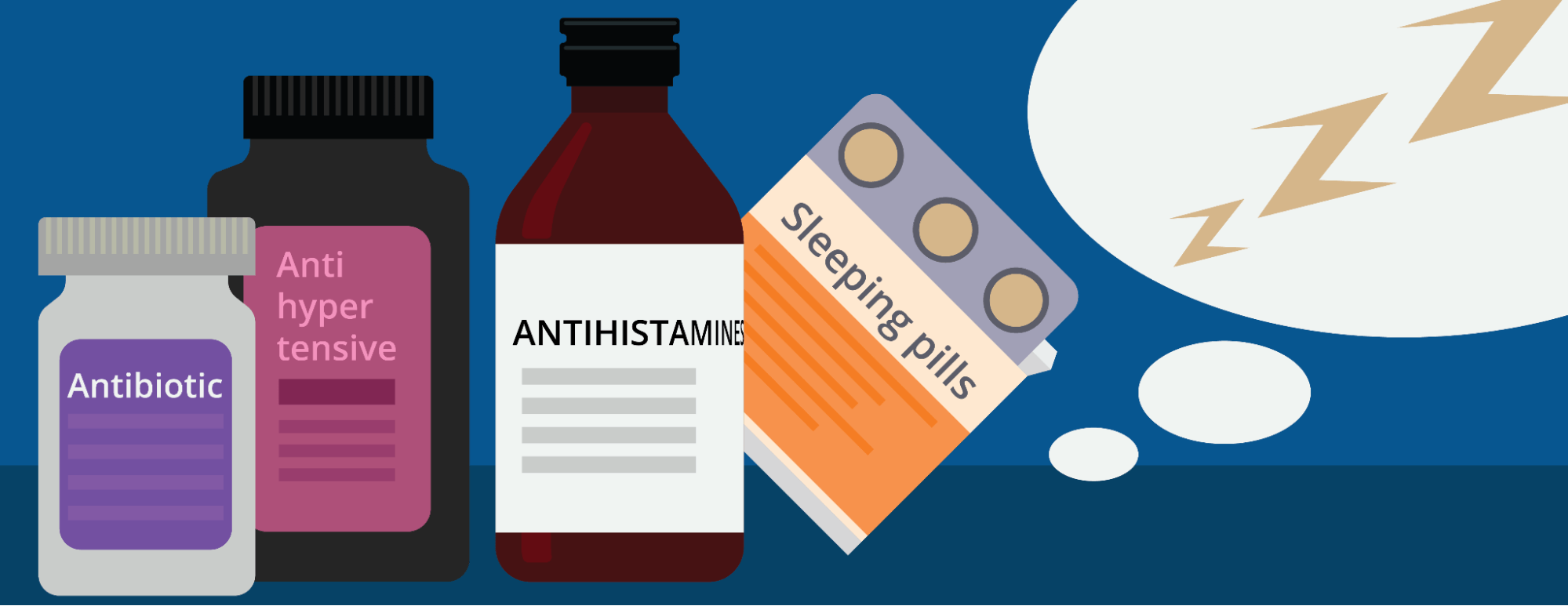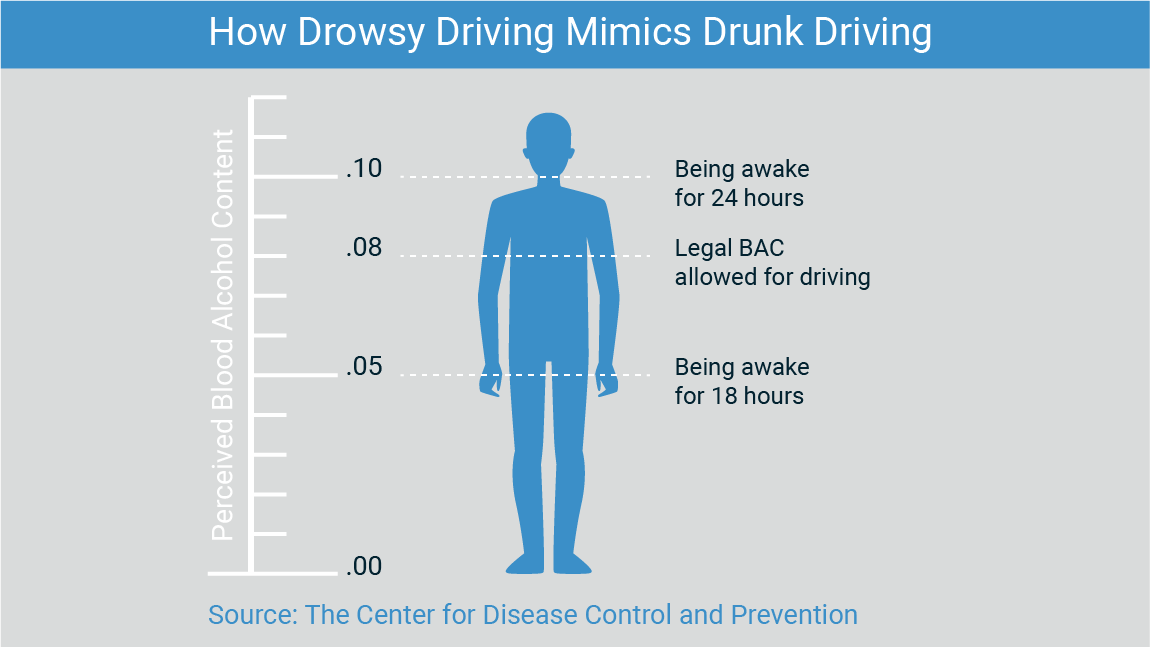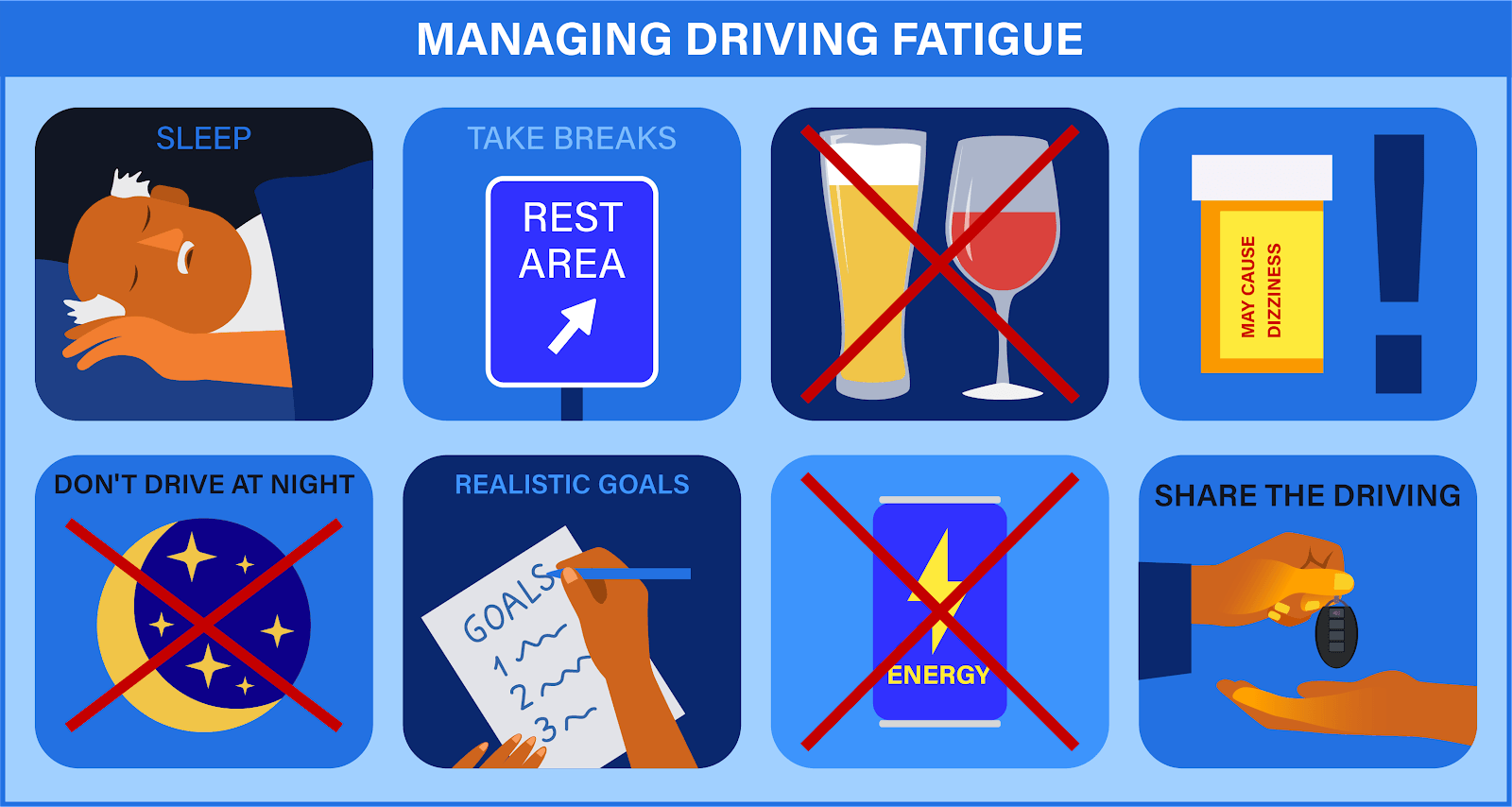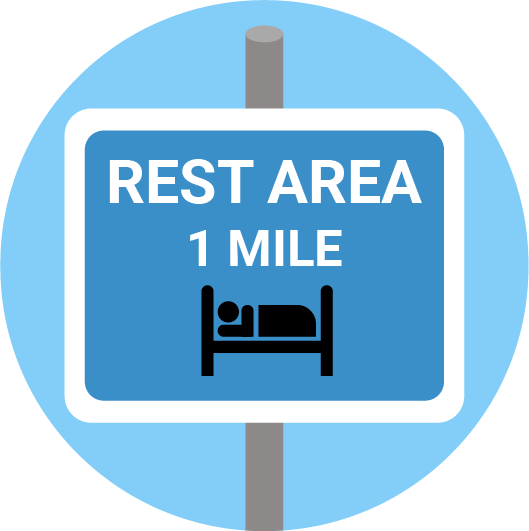Feeling sleepy and tired? If that’s the case, you’d be better off taking a nap or waiting until the next day to drive your car. Otherwise, you could be putting your life and the lives of others at risk.
In 2021, drowsy-driving crashes caused 684 deaths in the U.S. alone, according to the National Highway Traffic Safety Administration (NHTSA). Such accidents tend to occur later in the afternoon or between midnight and 6 a.m. when our alertness is at its lowest.
Drowsiness is more common among shift workers, truck drivers, and people taking certain medications, but no one is immune to it. Just one night of bad sleep can affect your ability to focus while on the road, increasing the risk of accidents.
What Is Drowsy Driving?
Drowsy driving means operating a motor vehicle while feeling very tired or sleepy. It’s like trying to read a book or study for an exam late at night. You want to stay focused, but your eyes are getting heavier and heavier. At some point, you realize that you’ve fallen asleep for a few seconds.
Now imagine this happening while you’re behind the wheel. The consequences could be fatal. Just one second of inattention can result in a serious accident that will haunt you forever (if you make it alive!).
Drowsiness affects reaction time, mental focus, vigilance, and cognitive function, warns the NHTSA. These factors are crucial for safe driving.
For example, you could miss a cyclist on the road or fail to see a stop sign while driving in a drowsy state. There’s also a risk of falling asleep for seconds at a time—a phenomenon called microsleep.
Traffic school can help you keep a clean driving record, prevent insurance increases, and more!
Who Is at Risk for Drowsy Driving?
Anyone can experience drowsiness while driving, but some individuals are at higher risk.

Let’s see a few examples:
- Young people, especially men under 30
- Shift workers, including nurses and hospital interns
- People who work irregular hours
- People with untreated sleep disorders, such as narcolepsy or restless leg syndrome
- Those with chronic heart disease, dementia, epilepsy, or Parkinson’s
- Commercial drivers who operate trucks or other large vehicles
- Sleep-deprived individuals
- People who have been drinking alcohol
- Drives who take certain medications (e.g., sleeping pills, muscle relaxants, or some antidepressants)
For instance, truck drivers often work at least 12 hours per day, or up to 70 hours per week. As a result, they accumulate sleep debt and may experience fatigue. These factors contribute to drowsiness, which may lead to accidents.
Drivers under the age of 30 are at risk, too. According to an earlier study cited by the NHTSA, this group accounts for two-thirds of drowsy-driving crashes.
A possible explanation is that young people, especially teenagers, go through developmental changes that increase their need for sleep.
Additionally, they often juggle multiple jobs, schoolwork, and social activities—and have little time for rest. Other factors, such as the use of alcohol or drugs, can further affect their alertness and mental focus.
Speaking of alcohol, it’s best to avoid drinking the night before driving. Alcohol consumption can interfere with your sleep, leaving you feeling drowsy. You might also get a hangover, which can further affect your reaction time, vigilance, and concentration.
Which Medications Make You Sleepy?
Let’s face it—many of us take painkillers, antihistamines, or other drugs and then drive our cars. The problem is that these medications may cause drowsiness, fatigue, and sedation.
For example, first-generation antihistamines can increase daytime sleepiness. These include chlorpheniramine, doxylamine, brompheniramine, and others.
Second-generation antihistamines appear to be safer in this regard, but more research is needed to confirm it. These drugs may still cause sleepiness, depending on their composition. For instance, cetirizine is more sedating than levocetirizine.
While not everyone will experience these side effects, it’s better to be safe than sorry. So, if you start taking a new drug, wait a few days to see how your body reacts and, based on that, decide whether or not it’s safe to drive.

According to Harvard Medical School, the following medications are most likely to cause drowsiness:
- Antihypertensives: This category includes calcium channel blockers, adrenergic blockers, direct vasodilators, and other medications for high blood pressure;
- Statins: Atorvastatin (Lipitor) and other drugs used to treat high cholesterol;
- Benzodiazepines: Alprazolam (Xanax), diazepam (Valium), and other drugs prescribed for seizures and anxiety disorders;
- Sleeping pills: Both prescription and over-the-counter sleeping pills can cause drowsiness, and 10% of people may experience a hangover-like feeling the day after taking sleep medicines;
- Antidepressants: Most medications in this category have a sedating effect and may worsen fatigue;
- Antipsychotics: These affect central nervous system (CNS) activity and dopamine levels, resulting in drowsiness;
- Antibiotics: Ceftriaxone and other antibiotics may cause drowsiness, confusion, and fatigue in some people.
Other common culprits include antacids, prescription pain medications, sleeping pills, muscle relaxants, and anti-emetics.
Note that some dietary supplements may cause drowsiness, too. Two examples are Paullinia cupana, or guaraná, and Eleuthero, or Siberian ginseng.
Ironically, guaraná is a common ingredient in energy drinks, while Siberian ginseng is supposed to increase energy levels. But, again, their side effects may vary from one person to another.
The Warning Signs of Drowsiness
This psychological state is characterized by a strong urge to sleep, but you may also experience other issues. For example, you might find yourself blinking or yawning more than usual.
Other warning signs of drowsy driving may include:
- Poor mental focus
- Overall fatigue
- Wandering thoughts
- Mood signs
- Memory gaps (e.g., not remembering the last few miles driven)
- Drooping your head
- Drifting out of your lane
- Missing traffic signs
- Tailgating, or struggling to maintain a consistent distance from the car in front of you
- Difficulty maintaining a consistent speed
If you notice any of these signs, pull over and get some rest. Even a 20-minute nap is better than nothing.
Alternatively, drink a cup of coffee, but wait for the caffeine to kick in before you hit the road again.
On average, caffeine levels in the bloodstream peak 30 to 60 minutes after ingestion. In some cases, it takes up to two hours to feel the effects.
The Dangers of Drowsy Driving
Drowsy driving is just as dangerous as drunk driving.
One study found that going without sleep for 17 to 19 hours is the equivalent of having a blood alcohol content (BAC) of 0.05%. The fatigue caused by sleep deprivation can impair alertness and response speed, compromising your safety on the road.
Skimping on sleep for 24 hours affects cognitive and psychomotor performance to the same extent as having a BAC of 0.10%. At this BAC, you may have a hard time coordinating your limbs, making decisions, and reacting quickly to changes in traffic conditions.

Read: Drunk Driving Statistics
Given these aspects, it’s no surprise that drowsy driving causes over 100,000 car crashes and 1,500 deaths each year. An earlier study indicates that 21% of all crashes involving drowsy drivers are fatal. Another 13% result in severe injuries, and only 5% don’t cause any injuries.
The numbers may actually be higher, says UCLA Health.
Most statistics come from the NHTSA and don’t include data on car crashes involving more than one vehicle or those occurring during the day. Therefore, the real-world impact of drowsy driving is greater than one might think.
On top of that, it’s hard to tell when someone is too drowsy to drive. Police officers can test drivers for drug or alcohol consumption, but there’s no way to measure the degree of tiredness.
What’s even more concerning is the number of drivers who fall asleep behind the wheel. In a 2011–2012 survey, one in 25 respondents said they experienced this issue in the previous month. Those who regularly got less than six hours of rest per night were more likely to fall asleep while driving.
However, sleep deprivation isn’t the only culprit. In some cases, microsleep episodes are due to an underactive thyroid, severe anemia, kidney or liver disease, heart failure, or stroke.
With that in mind, it makes sense to think twice before hitting the road when you feel tired. While there are some steps you can take to stay alert while driving, nothing can replace a good night’s sleep.
Read: California Car Crash Statistics
How to Stay Awake (and Alert!) on the Road

The best way to stay alert while driving is to get the recommended eight hours of sleep, but that’s not always easy.
In fact, more than one-third of adults sleep less than seven hours per night. Even if you manage to get enough rest, you may still be tired due to shift work, stress, medications, or bad health.
Here are some things you can do to prevent and reduce drowsiness while driving.
- Avoid alcohol and sedatives: Steer clear of these substances for 12-24 hours before hitting the road.
- Schedule regular stops: Take a break from driving at least every two hours or 100 miles. Nap for 15-20 minutes or slightly longer if you’re feeling tired.
- Plan things out: Leave home earlier when traveling long distances so you won’t have to drive late at night.
- Use the “buddy system:” Ask a friend to join you on long trips. This way, you’ll have someone to talk with, even if they don’t drive.
- Eat mindfully: Avoid heavy meals before going behind the wheel. Overeating can make you feel tired and drowsy.
- Fill up on caffeine: Drink a cup of coffee or green tea before jumping into your car. Both beverages contain caffeine, which is a natural stimulant.
- Take a coffee nap: Drinking coffee prior to a 30-minute nap can boost alertness and energy levels to a greater extent than coffee or napping alone. With this strategy, the caffeine will kick in by the time you wake up.
- Let the air in: Roll down the windows to get some fresh air. Exposure to cold air can reduce fatigue and increase wakefulness.
- Get moving: Prolonged sitting may cause tiredness and fatigue. Leave the car and stretch your muscles or take a short walk to get your blood flowing.
- Turn on the music: This habit can boost mental alertness, attention, and memory, keeping you awake while driving.
- Use crash-avoidance technologies: Some cars have lane departure warning systems, drowsiness detection systems, automatic braking systems, and other useful technologies. If your car lacks these features, you may be able to get them installed at an auto-electric repair shop.
Most importantly, listen to your body and know when to stop driving. Naps, coffee, music, and other quick fixes can only do that much.

Remember the old saying, “Better safe than sorry.”Ask a friend to drive or take public transportation when you’re overly tired. Alternately, pull over in a safe location and sleep for a few hours. If you work night shifts, consider joining a carpool or using a rideshare app.
At the end of the day, staying alert on the road isn’t about avoiding fines. It’s about keeping yourself and others safe.
